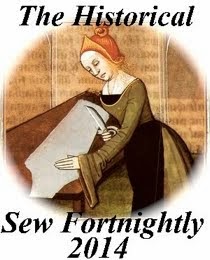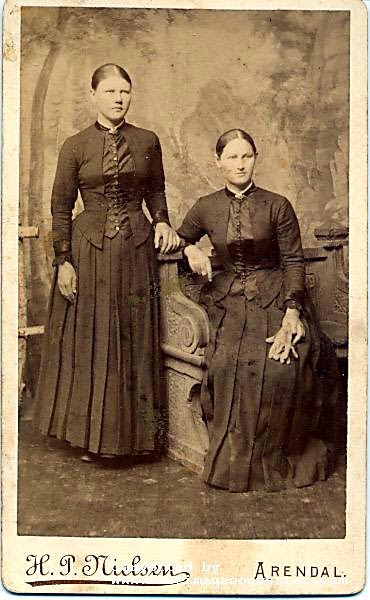 Victoria Fashion magazine. 1869 fashion plate. Wikipedia.
Victoria Fashion magazine. 1869 fashion plate. Wikipedia. Even though the Great Dickens Christmas Fair has ended for the year, there are many 19th century-themed events scheduled for 2010 in various parts of North America, and appropriate Victorian costume is a good addition to the ambiance. One detail that can really distract from an otherwise good Victorian appearance is a modern hairstyle. Hair that was loose, "piecey", wispy, or with "body" was not the stylish ideal for women! Women's hair was supposed to be glossy, smooth, controlled, off the face, and elegant, and anything else was considered sloppy, un-groomed, and unbecoming.
When you wear a Victorian costume, your hair should not be in an obviously modern style. At the very least, your hair should be parted in the middle, smoothed down (use mousse or gel for this), pulled back and pinned at the back of your head. If you have bangs, even they should be parted and slicked back, and they can be twisted together and pinned back to hold them in place. Although it is the current style for grown women to wear their hair down, for Victorian outfits, avoid wearing your hair loose if you are older than 12 years old! Even actresses and prostitutes wouldn't have worn their hair down in the streets unless they were "advertising" ...
Long hair can be braided or coiled into a bun and pinned up above the nape of your neck. If your hair isn't too long, or if it is shorter around your face, you can pin or slick back most of your hair, and curl your front hair (over your temples, in front of your ears) into ringlets that hang in front of your ears. These were called "sausage curls" in the period, because they appeared as round and solid as sausages! They should be very smooth, thick and glossy, they should not hang much lower than your jawline, and they should not hang over your forehead like bangs. Use lots of mousse, gel and hairspray to keep everything smooth! They should peek out from the brim of any bonnet or cap that you wear.
 Portrait ca. 1865. Wikipedia.
Portrait ca. 1865. Wikipedia. If your hair is too short to put in a ponytail, you should part it, gel it, comb and bobby-pin it to slick it behind your ears, try to make it as smooth as possible, and keep the back part covered with your bonnet. Conversely, you can curl all of your hair into smooth ringlets, all over your head, and let your front curls peek out from your bonnet brim. You can also get a natural-looking wig or hair-piece and style it in a Victorian style if your hair won't do what you want.
If your hair is dyed an obviously non-natural color, and you don't want to use a wig or re-dye your hair, your best bet is to cover it completely. Even though it was about 50 years out of date by the 1850s, the white “mob” cap style is good for this. Curl the hair along your hairline into pin curl ringlets so that they won't be so modern-looking if they peek out from the edges of your cap. Even if your hair is a natural color, and even if you have long hair, if you are over about 40 years old, you should also consider a cap. Cap information will be posted next!


























